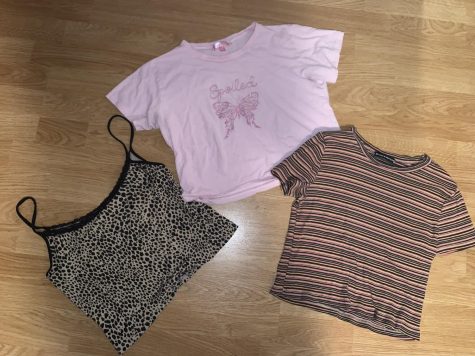The Damaging Phenomenon of Clothing Brands Creating Unrealistic Beauty Standards
The Recent Netflix Documentary, “White Hot: The Rise and Fall of Abercrombie & Fitch” highlights the problematic past of the popular clothing brand.
Early 2000s fashion set the precedent for exclusive fashion by creating trends meant to cater to those who were slim and physically attractive. A brand at the forefront of this ideal was Abercrombie & Fitch.
In the Netflix Documentary, “White Hot: The Rise and Fall of Abercrombie & Fitch,”past employees, shoppers, and models for Abercrombie & Fitch all spoke about how the brand was trying to cater their clothing to the “all american teen.” However, it became apparent that that audience consisted of teens who were white, physically attractive, and appeared wealthy.
Former CEO of the brand Mike Jeffries even reiterated this point in a 2006 interview with Salon.Com. “In every school there are the cool and popular kids, and then there are the not-so-cool kids. Candidly, we go after the cool kids. We go after the attractive all-American kid with a great attitude and a lot of friends. A lot of people don’t belong (in our clothes), and they can’t belong. Are we exclusionary? Absolutely.”
This ideal was very much reflected in their stores and by corporations by having managers rank their employees by attractiveness and letting the lower ranked employees go. Also by putting attractive workers at the front of the store and minority employees at the back.
Although Abercrombie & Fitch has since gone under new management and now avidly pushes diversity and inclusion, there are still popular clothing brands today that are still pushing unrealistic beauty standards similar to the ones present at Abercrombie & Fitch in the past.

A brand that immediately comes to mind for many teenage girls is the Italian clothing brand, Brandy Mellville. Brandy Mellville is a store that is intended for a teenage and female audience with its “on trend” clothing.
The brand had originally raised eyebrows around 2014 for its narrow range of sizes that only included small and extra small. Many regarded this size range as fatphobic and exclusionary a,s the brand’s instagram and workers only featured white teenage girls with long legs and a slimmer figure.
In September of 2021, Business Insider released an article exposing Brandy Melville CEO, Stephen Marson. Franco Sorgi, the man who opened the first Brandy Melville in Canada said that Marson told him that “overweight and black customers would ruin the brand” and that Marson wanted “good-looking rich little girls” in their store.
15 years after Jeffries released his statement to Salon.Com, the sad reality is that history is only repeating itself. Clothing brands continue to set an unrealistic standard in order to profit off of vulnerable teenagers who want to be socially accepted by their peers.
Although it is okay to sell clothing for petite females and there is nothing wrong with having a slimmer body type, an issue presents itself when a brand does not advertise themselves this way and indirectly makes girls feel like they are the problem when they are not able to fit in their clothes.
The truth of the matter is that humans come in all different shapes and sizes. However teenagers continue to be the target of corporations that manipulate people into thinking that you must wear their clothes in order to be seen as cool, attractive, and likable.
This exclusionary ideal that brands continue to push creates psychological damage such as eating disorders, body image issues, and even depression in young people.
Not only does this create extreme social issues but catering a product to a specific audience is only a bad business move as it narrows the audience of consumers.
By constantly curating trends and ideals these brands are also contributing to the dangers of fast fashion which is making an extremely negative impact on the environment.
In order to fix this issue, it is necessary for brands to realize that popularity should not require a certain look. It is also not the job of clothing brands to decide what should be considered cool and uncool. Clothing is meant to make people feel comfortable in their own skin and give people the freedom to express themselves if they so choose.
Everyone deserves the right to feel beautiful, which is why brands should thrive for inclusivity by providing a wide range of sizes and representing people of different races and body types.


